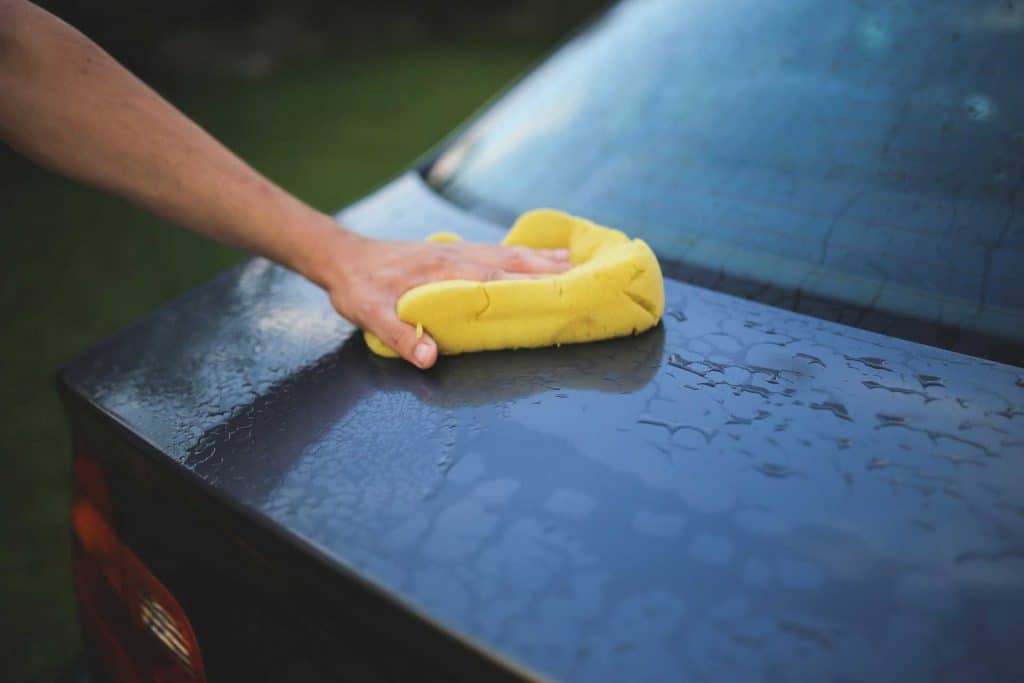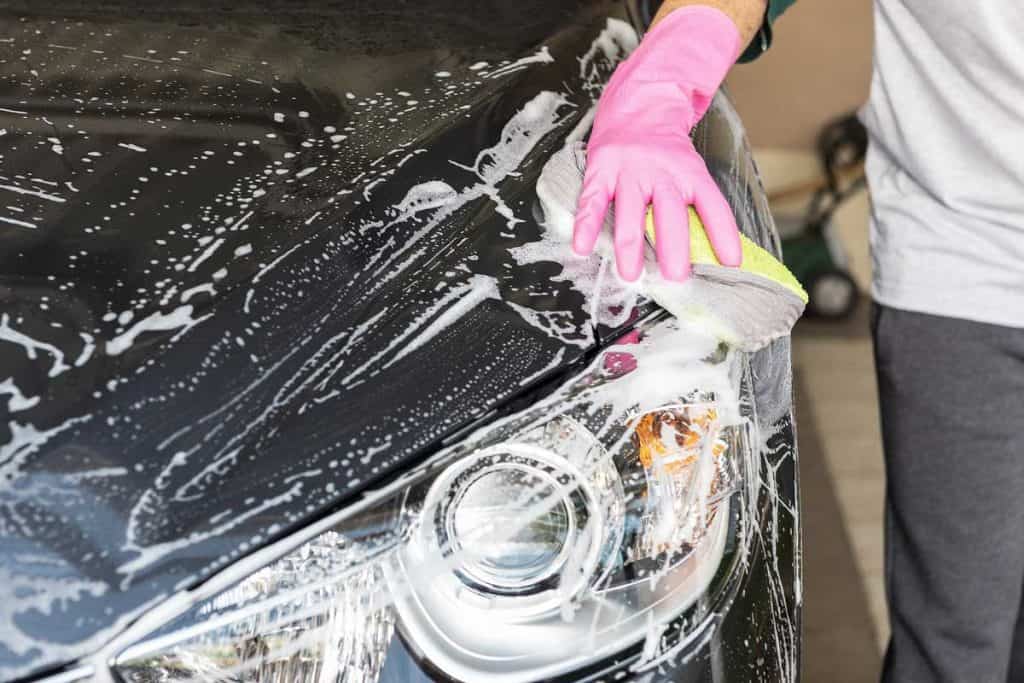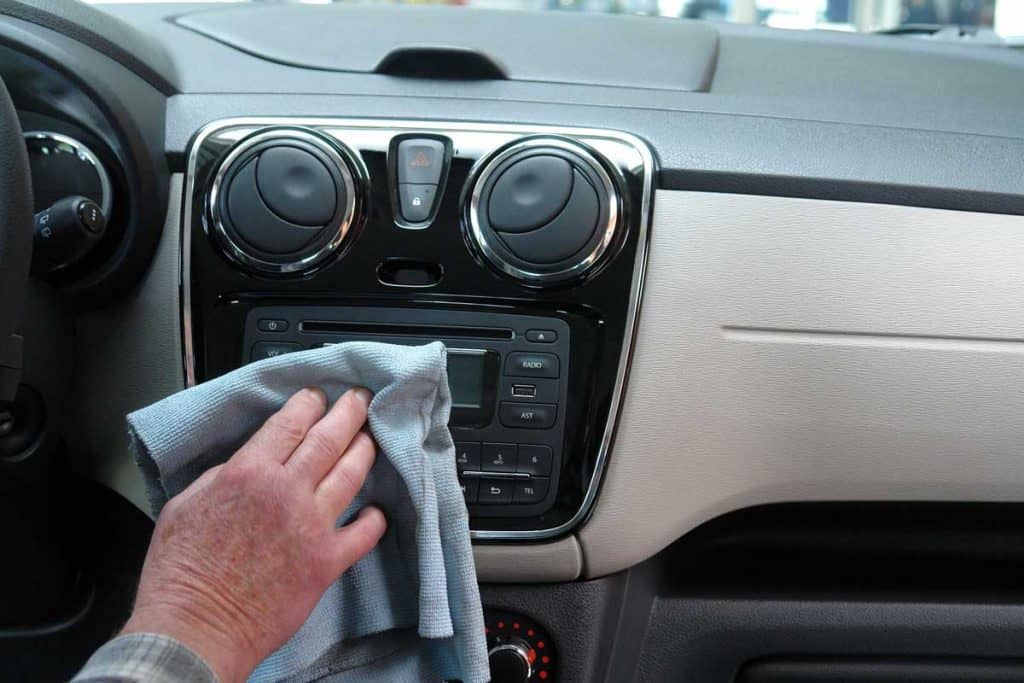 Waxing your car is the best way to restore the luster that it had when it was brand new. Waxing gives it a beautiful shine, helps water bead up and roll off in the rain, and is widely recommended as part of your car washing and maintenance routine. But how often to wax your car? It isn't always clear how long car wax will last, or what might affect its longevity. Lucky for you, we've done the research needed to give you a definite answer about the best wax job frequency for your car needs.
Waxing your car is the best way to restore the luster that it had when it was brand new. Waxing gives it a beautiful shine, helps water bead up and roll off in the rain, and is widely recommended as part of your car washing and maintenance routine. But how often to wax your car? It isn't always clear how long car wax will last, or what might affect its longevity. Lucky for you, we've done the research needed to give you a definite answer about the best wax job frequency for your car needs.
In general, you should wax your car every three months, or even every four months, for a total of three to four times per year. Waxing more often won't hurt your car, but it will waste a lot of wax.
There are other factors to consider when wondering if your car needs waxing -
- What's the weather like in your area?
- Where do you usually park your car?
- How old is the vehicle?
- How do you generally use your car?
- What type of wax do you use?
Four months is the average, but some waxes will last as long as six months, while others will need to be stripped and replaced in just two months.
We'll dive into more detail about waxing your car in the following paragraphs, including how those factors affect the wax you've applied to your car. We'll also answer some common questions about what wax does, and how to help your coat of wax to last as long as possible.
Does Wax Protect Your Car's Paint Finish?

Sort of. When your car is new from the dealership, it has that beautiful, shiny look, we all love. That shine isn't wax; it's a clear coating that protects the paint. That coating is durable, but on its own, it will last four about two years at the most.
Over time, tiny scratches and water drops build up, affecting the shine and wearing away the paint. That's where wax comes in. Wax protects the clear coat, which in turn protects the paint. So, in a roundabout way, wax does preserve your paint. But, it doesn’t protect against things like hail damage or scratches from fender benders.
Does Car Wax Prevent Water Spots?
It can, but it isn't a guarantee. A good coat of wax will cause water to bead up on the surface of the wax and rolls right off. This will effectively prevent the majority of water spots.
Water spots are created from dissolved minerals in the water that are left behind when the water evaporates. If the water doesn't have a chance to evaporate, it can't leave behind a water spot. Wax isn't entirely water repellent, though, and over time the wax coating degrades.
It's normal to see some water spots appearing a few months after applying the wax coat. Fortunately, these water spots are on the wax, not on the paint. That makes them much easier to remove. There also won't be many of them, which, again, makes them very simple to remove.
Does Wax Protect a Car From the Sun?
UV rays (ultraviolet light from the sun) can degrade any outdoor paint. That includes the paint on houses, furniture, and cars. They do this by oxidizing the paint, which is the same process that causes iron to rust. Oxidation alters the physical structure of the molecules in the paint, which changes its color.
Oxidized paint looks faded, dull, and old, and painting a vehicle is expensive. Car wax can protect your paint for ultraviolet light and help it to last longer, but only if you buy the right kind of wax. Finishing wax provides the most UV protection, so you want to be sure that's the wax you're using if UV protection is what you want.
Annoying bird droppings? Learn how to remove them now!
Can You Wax Your Car Too Much?
That depends on the kind of wax you're using. Many waxes are marketed as all-in-one products that will clean and wax your car in one step, and so they contain detergents and abrasives. You absolutely can use these waxes too much, and the abrasives can damage the paint if used too often.
However, you really shouldn't be using those waxes at all. It's much better to use only synthetic waxes that are meant as a finishing product. They will do a much better job of protecting your paint, and actual soaps are much better at cleaning your car.
These finishing waxes- whether natural or synthetic- cannot damage your car. You can use them as often as you like with no fear of harming your paint.
How Long Does Wax Last On a Car?
This will depend heavily on the specific wax you use. Natural waxes like carnauba wax won't last as long as synthetic waxes. Waxes designed purely for aesthetics will not last very long at all, but artificial waxes designed as finishing or sealing waxes should last for several months.
3-4 months is average, but check the manufacturer's recommendations on the wax, as it may differ, and some waxes don't last that long.
Is It Really Necessary To Wax Your Car?
That depends on what you mean by "necessary." Your car doesn't need wax to run, and wax will not affect the longevity of your vehicle.
However, to keep your paint job looking fresh, it is essential. The wax preserves the paint, keeping your car looking just as good as the day you bought it. This isn't just about vanity, though. If the paint oxidizes and fades, the resale value of your car will plummet.
Is Polishing the Same as Waxing?

No, but they are related. Polishing is what you do after you've waxed the car. Waxing is, as you might have guessed, the process of applying wax to the car. Once that's done, the wax will look cloudy and uneven. Polishing is the step that provides that shine we all know and love, as it smooths out the surface of the wax coat.
Can I Wax Without Polishing?
You can, but it wouldn't look very good, and it would degrade the ability of the wax to protect your paint. The surface of the wax would be uneven and rough so that it would look cloudy and obscure your paint.
It would also make it difficult for water to bead up and roll off, and the wax won't last as long. So, polishing, while it does look very nice, is not a purely aesthetic choice.
Is Buffing a Car Bad?

Buffing is the process that professionals use to remove paint from cars before the application of a new paint job, so many people are hesitant to buff their car at home. After all, you do not want swirl marks on your car, right?
However, the buffing done by professionals to remove paint is very, very different from what you can do at home. You don't even have the equipment necessary for the type of high-speed buffing they use.
While any buffing will remove some of the clear coat protecting your paint, the amount removed is minuscule. It would be very, very difficult for you to buff off the clear coat at home, let alone the paint.
How to Remove Car Wax
Removing car wax is a necessary step before you can apply new wax. Wax needs a clean surface to adhere to, so if you don't remove the old wax, any wax you use will not work correctly.
There are two simple ways to remove car wax: wax remover and detailing clay. Both are widely available and very easy to use. Wax removers are the easiest of the two. You spray them on, then wipe them off.
Will Washing Your Car Remove Wax?
If you use a soap made for washing cars, no, if you use household cleaners like laundry soap or dish soap, yes, car wash soaps are specifically designed to clean without stripping the wax.
This means that car wash soaps are the only product that you should use to wash your car. While dish soap or laundry detergent will strip the wax, they still aren't the best thing to use when you are trying to remove the wax, since they won't remove it altogether. They'll strip it just enough to cause problems, but not enough to be useful.
Can You Wax Your Car Every Week?
You can if you like. It won't cause any harm to the car unless you're using a wax that's also a cleanser. That said, it's hard to imagine a scenario in which that's necessary.
Most waxes last for months at a time before they start to degrade, so waxing every week would be overkill. While you might want to wash your car every week, you don't need to wax your vehicle every time you wash it.
How To Make Car Shine Like Glass
Giving your car that excellent, shiny finish is what we all want. In a new car, that shine is coming from the clear, protective coat that the manufacturer has put on over the paint. To maintain that shine, you need to use wax to protect that clear coat. Fortunately, it's not that difficult to do. Wash your car as you usually would, and let it dry thoroughly.
Then, use wax remover to strip the old wax off. Again, let it dry thoroughly. Next, you'll want to apply a good quality finishing wax over the entire car, following the manufactures instructions.
The final step is the most important for achieving that glass-like finish. You have to polish the car after applying the wax. Many waxes come with instructions on how to do this, so follow those. Polishing the wax is what creates that perfect, glassy shine.
After you've applied the wax, it will still be visible and cloudy all over the car. Polishing smooths out the surface of the wax, which makes it clear and helps it to be more resilient. Once the wax is polished, it's transparent, allowing the shine from the clear coat to come through.
If you're not sure how to do that and are willing to invest the extra buck, going for a professional wax and shine may be a better option. You can also get auto detailing done at the same time.
Learn how to protect your windshield from freezing here!
Conclusion
Waxing is an essential part of maintaining your car's appearance. Without a protective coat of wax, water spots will build up, and sunlight will oxidize your paint and cause it to fade. In short, a car that hasn't been appropriately waxed will look bad.
While that may seem trivial, it will drive down the resale value of the car. Plus, car wax isn't expensive, and waxing isn't difficult. It isn't a significant investment of time or money to keep your car waxed so that it looks good.
While the most common recommendation is to wax your car three times a year, you should pay close attention to the instructions that came with the wax. Some waxes last longer than four months, while others don't last nearly as long. The only other factors that may affect how long your wax lasts are the weather where you live, the way you use your car, and whether you use covered parking or not.
Keep yourself focused while driving with these polarized sunglasses!

This is a very informative article to read! I learned something about the longevity of the car wax and the methods on how to wax a car. Thank you for this!